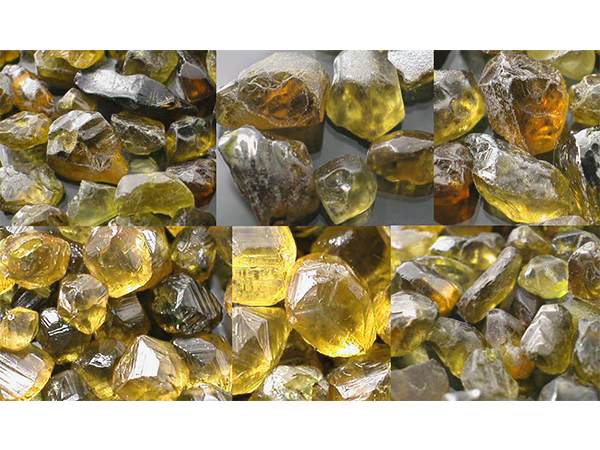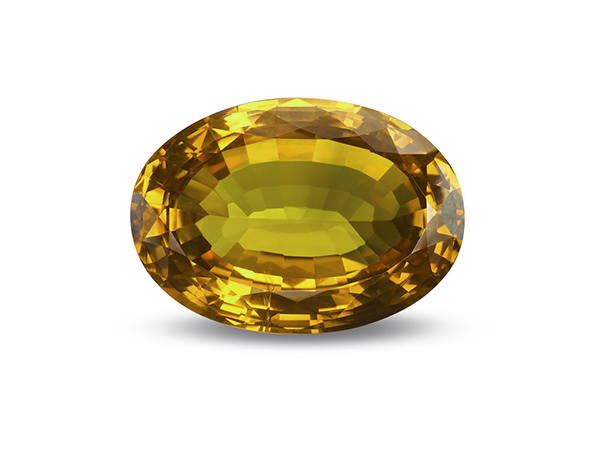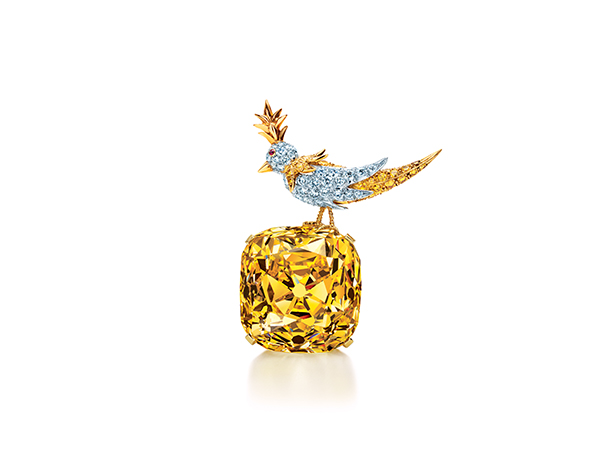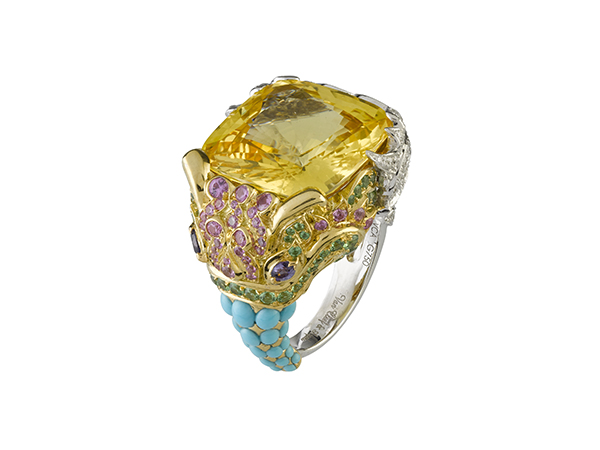ZIRCON

Zircon is widely found in acidic igneous rocks and also in metamorphic rocks and other sediments.
Zircon is chemically stable, so gem-quality zircon can also be found in the gravel of rivers. There are many kinds of zircons, and different zircons will have different colors, such as black, white, orange, brown, green or colorless and transparent. The cut gem-quality zircon is much like a diamond. Zircon has also been called zircon in the past.
Introduction
Zircon, also known as zircon, is called "hyacinth stone" in Japan. It is the birthstone of December and symbolizes success. (December birthstone also has turquoise, lapis lazuli) Its English name is Zircon, one of the oldest minerals on the planet. Zircon is a mineral name, formerly known as zircon, hyacinth, and transparent as a gemstone, called zircon gem.
The source may be derived from the Arabic "Zarkun", the original meaning is "Chensha and Yinzhu"; the other said that it is derived from the ancient Persian "Zargun", meaning "golden yellow". The first official use of "Zircon" was in 1783, used to describe green zircon crystals from Sri Lanka.
As you know, many things can be denatured by heat treatment, as is zircon. If the low-type zircon is heated to a certain degree, it becomes a colorless transparent crystal. For example, the zircon in Sri Lanka is mostly green and low-profile. After heat treatment, the color is obviously lightened and becomes a high-type zircon gem. The red and brown zircons produced in Hainan Province of China can be turned into colorless after heat treatment.
chemical composition
Theoretical chemical composition
Theoretical chemical composition (%): ZrO267.22%, SiO2 32.78%. It may contain a mixture of MnO, CaO, MgO, Fe2O3, Al2O3, TR2O3, ThO2, U3O8, TiO2, P2O5, Nb2O5, Ta2O5, H2O. The content of impurities such as H2O, TR2O3, U3O8, (Nb, Ta)2O5, P2O5, HfO2 is higher, and when the content of ZrO and SiO2 is correspondingly lower, the physical properties also change, and the hardness and specific gravity decrease. Zircon is generally weakly radioactive. Some zirconium quartz contains U, Th, etc., and is amorphous due to strong radioactivity.
The zircon hardness can be reduced to 6, and the specific gravity can be reduced to 3.8. Thus forming a variety of varieties: Yamaguchi, TR2O3 10.93%, P2O5 17.7%; Dashan Stone, TR2O3 5.3%, P2O5 7.6%; seedling stone, TR2O3 9.12%, (Nb, Ta) 2O5 7.69%, including U, Th higher Qujingite, containing higher TR2O3, U3O8, named after crystal plane curvature; hydrozircon, containing H2O 3~10%; yttrium zircon, BeO 14.37%, HfO2 6.0%; yttrium-rich zircon, HfO2 Up to 24.0%. Some zircons contain U, Th, etc., and become amorphous due to strong radioactivity.
Main chemical composition
The main chemical composition is zirconium silicate; the chemical composition is Zr[SiO?], and the crystal belongs to the tetragonal system of island-like structure silicate minerals. The crystal is in the form of a short column, usually a square prism, a quadrangular double cone or a complex square pyramid.
Zircon is available in a variety of colors, such as colorless, purplish red, golden yellow, light yellow, garnet red, olive green, champagne, pink, purple blue, apple green, etc., generally available in colorless, blue and red varieties. The dispersion is 0.039 (height). Gloss is a strong glass luster to diamond luster.
No clerk. The Mohs hardness is 6 to 7.5, the ratio is large, and the density is mostly 3.90 to 4.73 g/cm3. High type: 4.60 to 4.80 g/cm3. Medium: 4.10 to 4.60 g/cm3. Low type: 3.90 to 4.10 g/cm3.
Structural form
Zircon is produced as a secondary mineral in various igneous rocks; zircon is chemically stable and is therefore often preserved and bleached, and appears as detrital and sedimentary rocks and sedimentary metamorphic rocks, and the true value of zircon is Sand-type zircon deposit. It is rich in minerals in alkaline rock and alkaline pegmatite. The famous producing areas are southern Norway and Ural, Russia. Zircon is also often enriched in sand mines.
The world's important gem-quality zircon is produced in Laos, Cambodia, Myanmar, Thailand and other places. There are also gem-quality zircons in alkaline basalts in eastern China. Zircon is the most important mineral raw material for the extraction of zirconium and hafnium, and is also used in the defense and aerospace industries.
Zircon is a silicate mineral, which can be divided into high and low types according to its physical properties and chemical composition. Crystals with complete crystals are mostly "high"; those with very poor crystals or those with no crystals are "low". Due to the radioactive elements, the internal structure of zircon is destroyed. According to the internal structure, it is divided into high-type zircon, medium-sized zircon and low-type zircon. But in terms of gemstone value, high zircon is of higher value.

However, the most popular colors are blue and colorless, of which the value of blue is higher, and the color is generally optimized by heat treatment. Many of the zircons on the market are sold after heat treatment. Zircon is often heat treated to increase its quality, or to change color or to change the type of zircon.
Since it has not been added to any other materials during the optimization process, it is still recognized as a natural gemstone in jewelry identification. After optimization, zircon will become more beautiful and easy to sell.
The crystal of zircon is a tetragonal system, a0=0.662 nm, c0=0.602 nm; Z=4. In the structure, Zr and Si are arranged along the c-axis to form a tetragonal unit cell. The crystal structure can be regarded as a combination of a [SiO4] tetrahedron and a [ZrO8] triangular dodecahedron. The [ZrO8] triangular dodecahedron is tightly connected in a co-edge manner in the b-axis direction.
Complex tetragonal double cone crystal, D4h-4/mmm (L44L25PC). The crystal is tetragonal, bicyclic, columnar, and plate-like, and the morphology is closely related to the composition. The main simple shape: square column m, a, square double cone p, u, complex square double cone x. It can be made into a knee-shaped double crystal. It can form a regular connection with xenotime.
The composition of zircon contains radioactive elements such as uranium (U) and thorium (Th). But the content is very low, far below the safety factor. So everyone can wear zircon decorations with confidence.
Zircon is a special gemstone. It has a high refractive index and a strong dispersion. After processing a colorless or light blue variety, it has a strong fire phenomenon like a diamond. Because it is similar in appearance to diamonds, it is known as a gemstone comparable to diamonds.
As you know, many things can be denatured by heat treatment, as is zircon. If the low-type zircon is heated to a certain degree, it becomes a colorless transparent crystal. For example, the zircon in Sri Lanka is mostly green and low-profile. After heat treatment, the color is obviously lightened and becomes a high-type zircon gem. The red and brown zircons produced in Hainan Province of China can be turned into colorless after heat treatment.
The gem world ranks zircon, turquoise and lapis lazuli as the birthstone of December, symbolizing victory and good luck, which is the guarantee of success.

The famous producers of zircon are Sri Lanka, Thailand, Laos and Cambodia. Zircon produced in Yunnan, China generally needs to be heat-treated.
Some of the diamond substitutes we saw in the mall - the zircon claimed by the salesperson, is not the natural zircon mentioned above, and a synthetic Cubic Zirconia, CZ for short, the price is very low. Natural zircon is one of the most common substitutes for diamonds. Do not confuse it with natural zircon.
Zircon is widely distributed in acidic and alkaline magmatic rocks, and is also commonly produced in basic and neutral rocks.
The square is short columnar, square and double-cone. High hardness, diamond gloss. The distinction from rutile is that the hardness is large and the rutile has complete cleavage. The difference from cassiterite is that the density of zircon is small. The difference from monazite is that zircon has a square columnar crystal shape and has a high hardness.
The main identification characteristics of zircon include: high refractive index, strong gloss, high birefringence, high density, high dispersion and typical spectral characteristics.
Because zircon is rich in color and the color depth varies greatly, zircon can be mixed with gemstones of any color and transparency. The most easily mixed stones are diamonds, spinels, gold emeralds, sapphires, rubies, garnets, zircons, stones, etc.
Physical and chemical properties
Colorless, light yellow, purple, red, blue, green, smoked gray, etc. Glass to diamond luster, sometimes with grease luster. Not completely cleavable.
Transparent to translucent. Hardness 7.5~8. The relative density is 4.4~4.8. Since it is often radioactive, it causes amorphization of itself, and transparency, gloss, density, and hardness are all lowered.
Yellow light is emitted under X-ray irradiation, weak yellow light is emitted under the cathode ray, and bright orange light is invented under ultraviolet light.
Under the polarizer: colorless to pale yellow, strong dispersion, large refractive index. No = 1.91~1.96, Ne = 1.957~2.04. The homogenous body refractive index will decrease, N = 1.60~1.83.
The melting point is 2340~2550 °C. Under oxidizing conditions, it is stable at 1300~1500 °C; it decomposes at 1550~1750 °C to form ZrO2 SiO2. Linear thermal expansion coefficient of 5.0 10-6 / ° C (200 ~ 1000 ° C), and heat shock, good stability. It does not react with CaO, SiO2, C, Al2O3, etc. at high temperature, and has strong slag resistance and does not stick to molten steel.
Zircon is classified into high type according to its degree of crystallization (tetragonal crystal, zircon with little or no radiation, no or little change in crystal lattice), low type (composed of various amorphous mixtures, low degree of crystallization) , large lattice change), medium (between high and low), hardness changes from low to high, low can be as low as 6, high can be as high as 7.5, density is also from low to high The type gradually becomes larger, the range is 3.90~4.73, the zircon has no cleavage, the fracture is shell-like, the zircon is brittle, and the common corners are damaged, which is called paper erosion effect. Some zircons can also have cat-eye or starlight effects, but they are rare.

Types of
The classification of the zircon structure in the trade is not conducive to the purchase of customers, and the market is basically high-type zircon, especially the treatment of stone.
There is no need to emphasize its type, so today, in business, the varieties are still divided by color.
(1) Colorless zircon: It should be as colorless and transparent as diamond, without any gray or brown tone.
(2) Blue zircon: the most popular variety, including natural stone and heat-treated optimized stone. Optimized stone factor did not add any other substances during the optimization process, so.
In the identification of jewelry, it is still recognized as a natural gemstone, and the color of the gemstone is deep and shallow. Blue zircon without any brown hue has strong dichroism; brownish.
It is possible to turn golden yellow under extreme high temperature and high pressure (very rare, basically does not occur). Blue zircon often has a light green tone.
(3) Blue-green or yellowish-yellow blue zircon.
(4) Green and slightly greenish yellow zircon.
(5) Orange, brown and yellow zircon.
(6) Red zircon: including red to orange red.
Some people also listed the rare zircon cat eyes as a single species.
Industrial applications
Extract the main mineral raw materials of Zr and Hf. The main industrial uses of zircon are as follows: refractory materials; sand materials; ceramic raw materials; gem materials.
Zircon is extremely resistant to high temperatures and has a melting point of 2,750. And resistant to acid corrosion. 80% of the world's zircon is used directly in the foundry industry, ceramics, glass industry and manufacturing.
Refractory material. A small amount of zircon is used in ferroalloys, pharmaceuticals, paints, tanning, abrasives, chemicals and the nuclear industry. A very small amount of zircon is used to smelt the metal zirconium.
Zircon sand containing 260 to 66% of ZrO is directly used as a casting material for iron metal in foundry because of its refractory resistance (melting point of 2500 ° C or higher). Zircon sand has a higher.
Low thermal expansion, high thermal conductivity, and strong chemical stability compared to other common refractory materials, so high quality zircon and various other bonds.
The agents together have good adhesion and are used in the foundry industry. Zircon sand is also used as a brick for glass kiln. Zircon sand and zircon powder are mixed with other refractory materials.
There are other uses.
Zircon and dolomite react together at high temperatures to form zirconium dioxide or zirconium oxide (ZrO2). Zirconium oxide is also a high quality refractory material, although its crystal form is temperature.
And change. Stable zirconium oxide also contains a small amount of oxides of magnesium, calcium, strontium or barium. The stable zirconium oxide melting point is close to 2700. It is resistant to thermal shock.
It is poorly reacted with medium-sized zircon. Stable zirconium oxide has low thermal conductivity, and it is harmless to use cerium oxide as a refractory in industrial zirconium.
Zirconium in the form of metal, mainly used in the chemical industry and nuclear reactor industry, as well as in applications requiring corrosion resistance, high temperature resistance, special fusion properties or absorption specific.
In other industries of neutrons, about 8% of the total zirconium consumption in the United States is used in these industries, and the only significant application of base metals is in nuclear reactors.
Should be piled up.
Zirconium metal is obtained by a multi-stage refining process. Initially zircon is reacted with coke in an electric furnace to produce zirconium hydride, which is then chlorinated to form zirconium tetrachloride. Magnesium reduction of tetrachloro.
The Thekroll Process includes the reduction of tetrachloride, which is used to place the magnesium metal in an inert gas to obtain a sponge-like zirconium metal.
High-purity zirconium metal can be refined by iodide thermal dissociation method, in which metal and iodine vapor are reacted at a temperature of 200 ° C, and,The volatile iodine is sent to the connector to make zirconium a form of volatile iodine which is separated from most impurities. Iodine at a temperature of approximately 1300 ° C.
The object is separated on a heated filament. High purity zirconium is attached to the filament. The released iodine is transferred from the filament, and this product is called a zirconium rod.
Uses: More than 90% of the sponge zirconium is the raw material of the zirconium-based alloy as the structure and cladding material in the nuclear reactor. Metal zirconium in chemical, pesticide, printing and dyeing, etc.
It can be used in the manufacture of corrosion-resistant reaction towers, pumps, heat exchangers, valves, agitators, nozzles, conduits and vessel linings. It can also be used as a steelmaking machine.
Deoxidation and denitrification agent in the process, grain refiner of aluminum alloy. Zirconium wire can be used as grid support, cathode support and grid material, as well as air plasma.
The electrode tip of the cutting machine. Zirconium powder is mainly used as a deflagration agent in the arms industry. It can be used as a getter in electronic devices. It can also be used to make firelights, fireworks and.
Flash powder
Wear
Precautions
Zircon is a common gemstone mineral, but some low zircons contain radioactive elements, so some low zircons are radioactive, especially bright orange.
Type zircon, it is best not to wear it as jewelry, such zircon is likely to be radioactive. So if it is zircon for jewelry, low-type zircon is unacceptable.
Low-type zircon is a zircon that is crystallized due to radioactivity, and is likely to be radioactive, so zircon for jewelry and jewelry will only be high.
Type zircon.
Related culture
In the eyes of Westerners, wearing red zircon can play a hypnotic role, can drive away the plague and defeat evil. Nowadays, some countries use zircon and turquoise together.
For the "December Birthstone", it symbolizes success and wins. High-type zircon is a mineral of early magma crystallization, does not contain radioactive elements, and is harmless to the human body. world.
The most famous blue zircon, weighing 208 carats, is now in the Museum of Natural History in New York.
Optimization processing
Heat treatment
Heat treatment can change the color of zircon and also the type of zircon.
Change color
Zircon from different origins will have different colors after heat treatment.
1) Heat treatment under reducing conditions produces blue or colorless zircon. The most important of these is the Vietnamese reddish-brown zircon material, after heat treatment.
Produces colorless, blue, and golden yellow, which is the most common variety in gemstone jewelry. The heat treatment steps are as follows:
First, the sample is placed in a closed crucible (usually 1 kg), placed in a furnace, and heated at a reduced pressure of 900 to 1000 ° C.
30% of the samples reached the gem level. The remaining 70% of the blue zircon, which is poor in color but good in clarity, can be further heated to produce a colorless zircon. This step is hot.
The purpose is to remove the brown hue in the zircon to produce a colorless zircon, while producing a white mist effect.
2) Heat treatment under oxidizing conditions, producing golden yellow and colorless zircon at a temperature of 900 ° C, and some samples may be red. Above heat treatment.
Samples that have not yet reached gem-quality color in two steps can also be heat treated to colorless or golden-yellow zircon under such oxidizing conditions.
Colorless, blue, yellow and orange-red zircon is obtained by heat treatment. The zircon heat treatment optimization process is based on the absence of any other substances.
It is still recognized as a natural gemstone. There is also a treatment method in which zircon and nitric acid, cobalt potassium iron salt are put together and burned in a mortar for 6-8 hours.
The method is generally rare. The zircon produced under this treatment method can change color again under extreme high temperature and high pressure conditions. Such as blue zircon at the extreme.
It can be converted to golden yellow or bright red under high temperature and high pressure. This partially converted color zircon is sometimes placed in a charcoal crucible and heated again.
800~900 °C, and can be completely turned blue. This phenomenon is closely related to the difference in impurity components in zircon caused by the difference in origin.
2. Change type
Heating to 1450 ° C, long-term heat treatment can cause recrystallization of silicon and zircon, turning low-type zircon to high-type zircon. After this treatment, low, medium and high zircons can increase density (up to 4.7g/cm3), have a high refractive index and clear absorption line, while also improving transparency.
And the degree of brightness. Recrystallization by heat treatment can also produce fibrous crystallites that form cat eyes.
The heat-treated zircon surface is more full and the gloss is also improved to some extent.
Irradiation treatment
The irradiation treatment of zircon and the heat treatment result are opposite reverse processes. Almost all high-quality zircon altered products obtained by heat treatment are irradiated (X-ray).
Lines, gamma rays, high-energy electrons, etc. can restore the color before heat treatment, or even deepen. Naturally produced zircons also undergo discoloration under irradiation, such as Colorless zircon can turn into deep red, maroon or purple, orange under X-ray; blue zircon can turn brown-reddish brown under X-ray irradiation.
However, this type of irradiation color change zircon color change process can be reversed, and can be restored to its original state under extreme high temperature and high pressure.
Identification
How to quickly distinguish between zircon and diamond?
Transparency test: If you draw a line on the paper, put the "diamond" on the paper. If you can see the line through the "diamond", it is not Diamonds, because diamonds will reflect 100% of the light, you should not see anything.
Humidity test: To the ore, the gas spreads very quickly. The surface of the diamond is very smooth, it can't hold water and condensate.
defect Test: Carefully observe the ore with a magnifying glass. If you can observe some small flaws inside the ore, then this is a real diamond. except
No, this is a very perfect diamond (almost impossible). Fake diamonds are always very pure and very clear.
UV test: If there is a relatively high-end equipment, it can be observed by ultraviolet light. If it can change color, it is a real diamond, because it is true.
Positive diamonds are responsive to ultraviolet light.
Polarizer
It can distinguish diamonds, spinels, garnets, etc. of homogeneous gemstones because zircon is a heterogeneous gemstone with four bright and four dark extinction under polarizer.
Phenomenon, while the homogenous gemstone is full extinction or spotted extinction.
Observation comparison
It is easy to distinguish zircon from other similar gemstones by measuring refractive index, density, spectrum, observing facet edge ghosts and inclusions.
Scientific discovery.
After testing by scientists, the micro zircon crystals extracted from the stones of a sheep farm in Western Australia have experienced 4.4 billion years, the most crustal.
One of the ancient parts.
By examining the stone, geologists determined that the earth's crust was formed at least 4.4 billion years ago, only 160 million years after the formation of the solar system.
In addition, scientists also believe that the existence of this stone shows that the early earth is not a place where many scientists think it is a harsh environment.
It proves that the earth has cooled to a temperature suitable for living.
